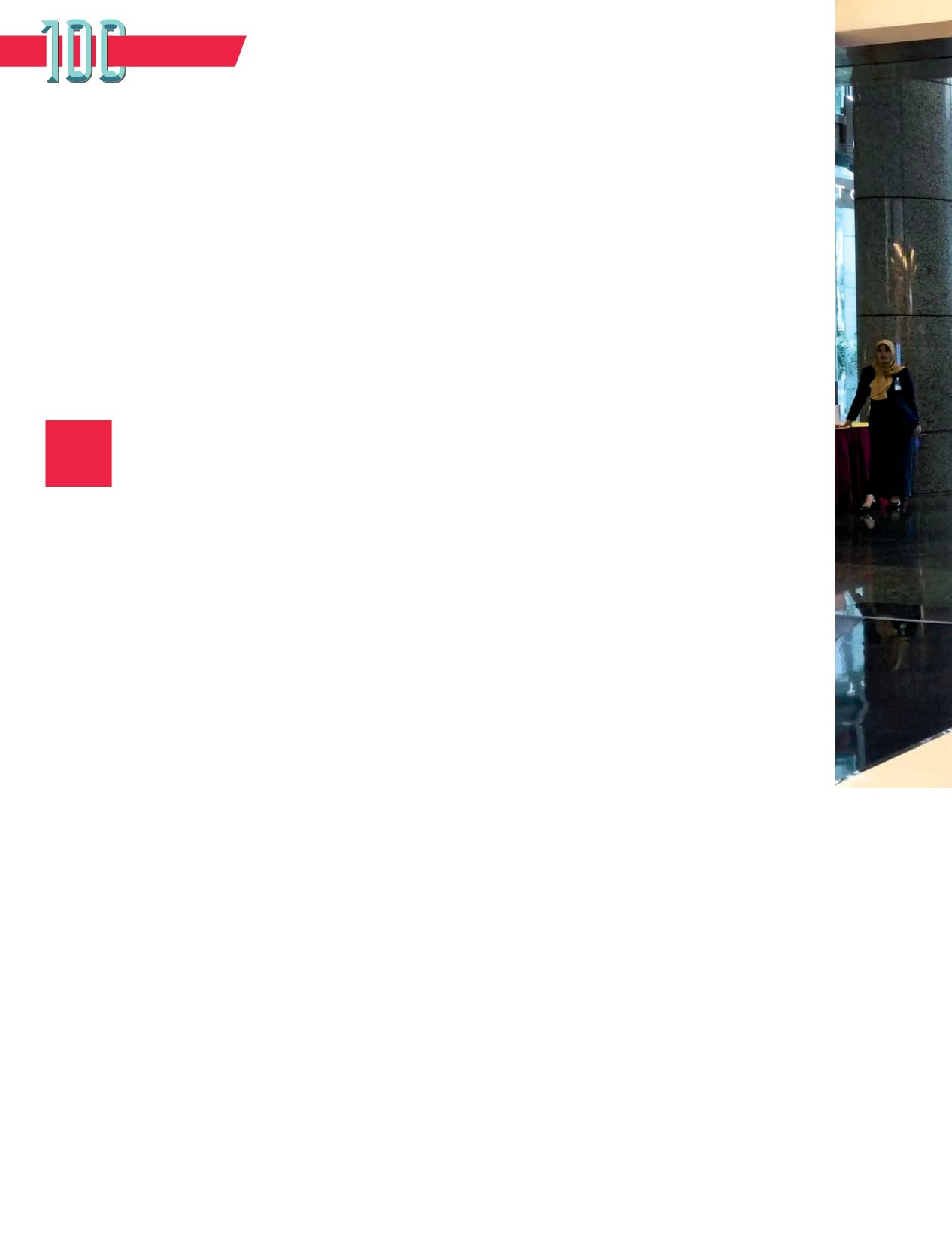

24
www.globeasia.comT op Group s
T Bank Central Asia Tbk, a lender
controlled by the Djarum Group,
concluded a Rp 500 billion ($43.5
million) bond offering on July 2.
This fundraising from the debt market is
important for the bank because the Financial Services
Authority (OJK) requires lenders with systemic risks
as large as BCA’s to strengthen their equity and boost
lending in Indonesia.
The debt paper issuance is part of the bank’s
larger plan to raise Rp 1 trillion over several years,
with the proceeds used to fund its lending business.
As the largest privately owned lender in Indonesia
with Rp 791.73 trillion in assets as of end of March
this year, BCA indeed plays an important role in the
country’s financial sector.
The lender services close to 18 million customer
accounts daily through 1,241 branches, 17,565
automated teller machines and nearly half a million
electronic data capture machines, as well as online
transactions.
The lender is in a sound financial position with
a capital adequacy ratio of 22.8 percent as of the
end of June – way above the 8 percent minimum
requirement set by the central bank.
“It is already overcapitalized; there is actually no
need to issue sub-debt again because it is costly,”
BCA president director Jahja Setiaatmadja said on July
9, as quoted by Investor Daily.
However, since the financial regulator requires a
systemic lender such as BCA to strengthen its capital
base to comply with the global banking regulatory
framework under the Basel III accord, the lender
will use the proceeds from the debt paper sale for
business expansion.
The lender’s chief was further quoted by
GlobeAsia’s sister publication as saying that BCA is
currently finalizing its plan to acquire some smaller
lenders and that it has already identified the banks
targeted for takeovers. Other than this, the lender
has budgeted Rp 4.5 trillion this year to boost its
subsidiaries’ capital.
Pos i t i on i ng
f or Be t t er Growt h
“[The use of the bond proceeds] will be flexible.
Depending on what we need, if used for an acquisition,
we will not add [capital] to subsidiaries. As far as we
know, subsidiaries don’t need more injections, so we
may allocate it there [for acquisitions],” he said.
Strong H1 Balance SHeet
Already a banking stock favored by analysts, BCA
maintained a solid performance in its first-half 2018
financial results. The bank’s balance sheet showed
strong growth, with net profit at Rp 11.4 trillion,
representing an 8.4 percent increase from the
corresponding period last year.
The bank’s loan portfolio increased 14.2 percent
year-on-year to Rp 494 trillion, while current
accounts and savings accounts grew 12.7 percent
to Rp 481 trillion. Corporate loans, commercial and
small-medium enterprise loans, and consumer loans
also grew at a healthy pace.
BCA booked a healthy nonperforming loan ratio
of 1.4 percent at the end of June, within the lender’s
risk-appetite limit, while the ratio of total allowance
to NPL (loan-loss coverage) stood at 187.8 percent to
provide a cushion against bad loans.
“BCA believes Indonesia has strong fundamentals
and positive prospects for long-term economic
development, despite the recent dynamic macro-
environment. Our strong balance sheet and prudent
banking approach will continue to provide us with a
solid foundation for future growth,” BCA president
director Jahja Setiaatmadja said in a statement on
July 26.
Jahja previously said the lender was optimistic
about its business in Indonesia and that it would
continue to make use of available opportunities
through prudent lending and preeminence in
transaction banking.
He said the lender would consistently adapt to
information technology developments amid changing
customer behavior. BCA, known as a transactional
bank, has been relying on customer loyalty to support
its third-party funding base.
By
Muhamadal azhari
P


















